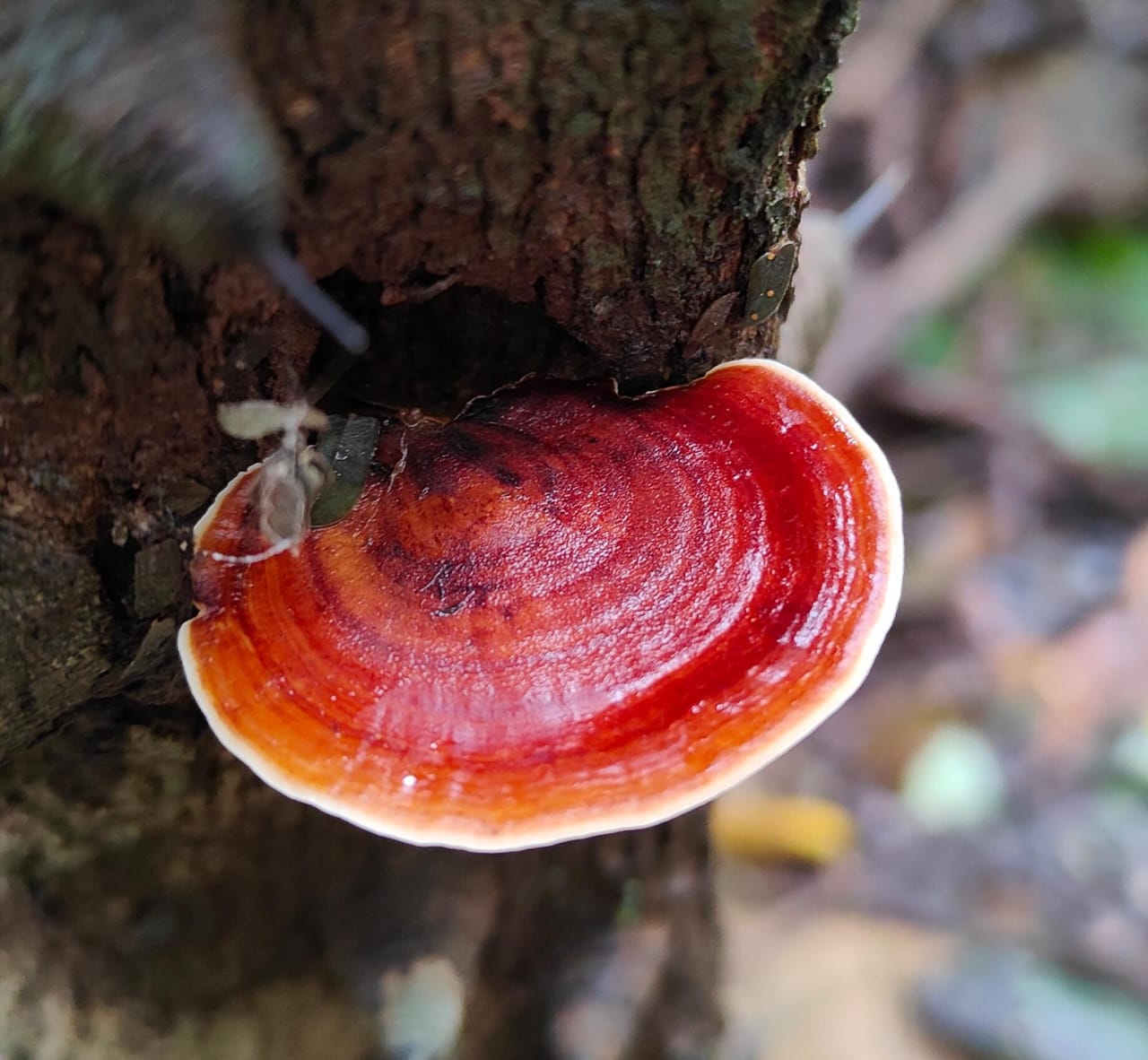Fruiting body large. Pileus 8–14 cm diam., plano-convex to applanate; surface fibrillose to floccose, pale yellow to yellow; margin non-striate. Lamellae free, crowded, pale yellow to white with lamellulae. Stipe 12–24×2–2.5 cm, cylindrical, slightly bulbous at base, covered by pale yellow, floccose scales; Annulus present, located on upper surface of the stipe, fragile, yellow. Basidiospores 8–10.2 × 7.3–9.2 μm, globose to subglobose, ellipsoid, amyloid, guttulate, smooth, thin-walled. Basidia 36–48 × 10.3–14.5 μm, clavate, 4-spored. Pileipellis composed of thin-walled, yellowish white, filamentous hyphae up to 8-20 μm wide.
Specimens examined
India, Maharashtra, Kolhapur, Ajara, Kasar Kandgaon, (16°04ʹ10ʺN-74°12ʹ32ʺE), on soil, amongst leaf litter, solitary, scattered, 07.07.2019, Bornak, S. I., Patil, A. R. and Biranje, S. S. (Y19V4C6)
Remarks:
The description of this species matches with Liu, et al., (2022). Morphologically, Amanita aureofloccosa can be recognized by possessing a slender stipe coated in orange-yellow floccose scales, and a pulverulent, brilliant orange-yellow volval remnant on its pileus, basidiospore globose to subglobose, amyloid and absence of clamps in all parts of basidiomata. This species is currently known in Brazil, Colombia, Ghana, the Southern Democratic Republic of Congo and Thailand (Liu, et al., 2022). In India, this species is described from Kerala (Verma and Pandro, 2018). This is a new report from Maharashtra state.
References:
Liu, Y.S., Kumla, J., Suwannarach, N., Sysouphanthong, P. and Lumyong, S. (2022). Three species of Amanita section Lepidella (Amanitaceae, Agaricales) from northern Thailand. Phytotaxa 570 (1): 016–028
Verma, R.K. and Pandro, V. (2018). Diversity and distribution of amanitaceous mushrooms in India, two new reports from sal forest of central India. Indian J. Trop. Biodiv. 26(1): 42-54






